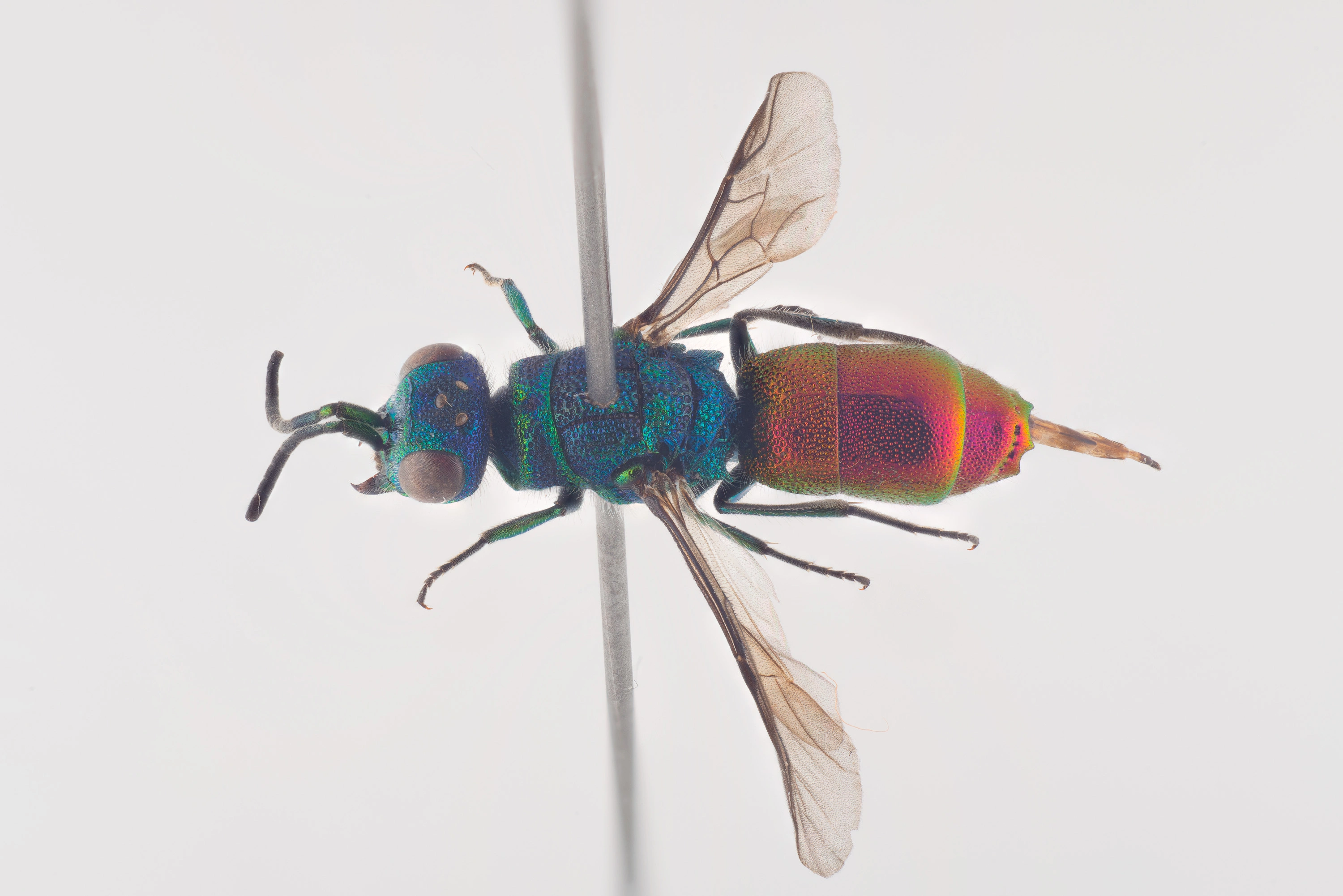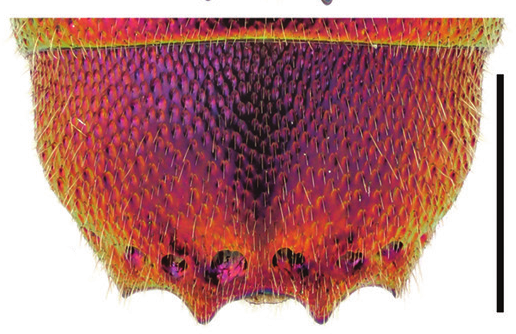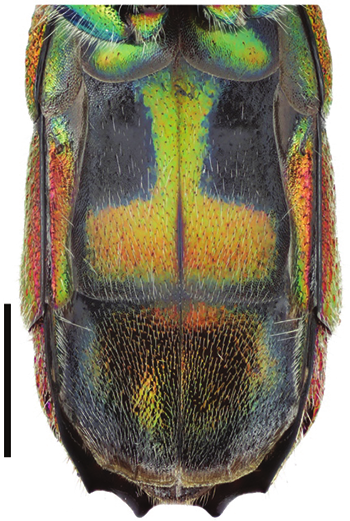Chrysis angustula
One of the most common Chrysididae which is frequently found in gardens on walls, tree stems, and other sun-exposed places. The host is the Eumeninae Symmorphus bifasciatus. Chrysis angustula can be recognized by the small size, narrow body-shape, and the sparse punctation on T2.
- Innhold
- Diagnosis
- Distribution
- Biology
Diagnosis
Figure 86
T3, dorsal view: C. angustula ♂. Scale 1 mm.
Figure 99
Metasoma, dorsal view: C. angustula ♀. Scale 1 mm.
Figure 119
Metasoma, ventral view: C. angustula ♀. Scale 1 mm.
Figure 126
Metasoma, ventral view: Chrysis angustula ♂. Scale 1 mm.
Length 6–9 mm.
The species can be confused with several other similarly coloured species of the C. ignita group (e.g. C. leptomandibularis, C. schencki and C. corusca). Compared to C. leptomandibularis and C. schencki, the mandible is thicker, the punctation of T2 is finer, the black spots of S2 are more rectangular and the posterior margin of the propodeal tooth is directed more downward. Compared to C. corusca, the mandible is thinner, the punctation of the tergites is finer and the colour of the sternites is more reddish (not green). The head and mesosoma are mainly dark blue, and usually have extensive green or golden reflections on the frons, pronotum, mesopleuron, mesoscutum and mesoscutellum, especially in the female. The metasomal tergites are golden red (Fig. 99) and the sternites golden or reddish (Figs 119, 126). The black spots of S2 are characteristically rectangular in shape (Figs 119, 126). The body is elongate and slender, with parallel sides (resembling C. leptomandibularis) (Fig. 99). The punctation of T2 is fine, and its surface is strongly shining posteriorly (Fig. 99). T3 is relatively long, and strongly shining, especially in the female (Fig. 99). The apical teeth are short, and the central interval is wide and shallow (Figs 86, 99). The ovipositor is narrow (as in Fig. 92) and the mandible relatively thick in both sexes.
Distribution
Denmark, Estonia, Finland, Latvia, Lithuania, Norway, Sweden. Very common.
Trans-Palearctic. Europe, southwestern Asia, Siberia, China (Linsenmaier 1997, Rosa et al. 2014).
Be aware that the records present in the GBIF map may be misleading for some countries due to unrevised data sets or missing information.
GBIF Taxon: Chrysis angustula Schenck, 1856Biology
Habitat: forest margins, clearings and gardens with sun-exposed dead wood. Adults are often found on walls of wooden buildings, poles, log piles and dead tree trunks. Occasionally they also visit flowers of Apiaceae and Asteraceae (Banaszak and Kochanowski 1994, our own obs.) and are attracted to honeydew of aphids.
Flight period: late May to September.
Host: primarily Symmorphus bifasciatus (Linnaeus) (van Lith 1958, Niehuis 2000, Pärn et al. 2014, our own obs.), but occasionally also Ancistrocerus trifasciatus (Müller), S. allobrogus (Saussure), S. connexus (Curtis) and S. debilitatus (Saussure) (Vespidae) (van Lith 1958, Niehuis 2000, Pärn et al. 2014, our own obs.).




